#(Lyrics from Daisy Bell by Harry Dacre)
Text
House of Leaves, 2001, and Daisy Bell (and why its not creepy)
(Fairly minor) Spoilers for House of Leaves by Mark Z. Danielewski and 2001: a Space Odyssey by Stanley Kubrick
About 500 pages into House of Leaves, Will Navidson begins falling. Alone in the twisting labyrinthine corridors of the House, he is alone, out of supplies, by all metrics thoroughly and definitively defeated. The floor suddenly disappears beneath him and he begins to fall. And there it is, vertically stark against the white page, as many lines are in this section, falling just as he is.
“Daisy. Daisy. Daisy. Daisy, Daisy, give me your answer do. I’m half crazy over the love of you. That’s not right.”
Daisy Bell was written in 1892 by composer Frank Dean under the pen name Harry Dacre. A relatively prolific composer at the time, he is thought to have written the song about Daisy Greville, the Countess of Warwick at the time, although evidence for this factoid is sketch at best, and the lyrics directly contradict this reading.
Daisy Bell is a very simple romance song that tells a very endearing story of a young couple’s romance, being unable to afford much more than the eponymous “bicycle built for two.” There’s also an often ignored line about how they will both “despise Policemen and lamps as well.” Even from a modern perspective this song feels really intimate and cute, expressing joy despite poverty, in the policemen line even expressing disgust at cops and urbanization without care for the environment.
Through a variety of circumstances, Daisy Bell, despite this global appeal, has become primarily associated with advances in computing, being the first song to be synthesized by a computer in 1961 on an IBM 7094, and references to this development persist.
The resilience of references to this accomplishment are remarkably popular, primarily due to Arthur C. Clarke and Stanley Kubrick’s 2001: a Space Odyssey in which the computer HAL 9000 sings the opening lines of the song as he is deactivated, calling back to the IBM demo, which Clarke himself had witnessed.
This rendition, and the original synthesized rendition are often described as creepy and off putting, but I find them strangely endearing. The original version represents a massive leap in computing, its few seconds of audio, and is extremely imperfect. The choice of Daisy Bell, and simple live song from a hundred years ago also helps to humanize the voice singing it.
HAL 9000’s rendition is pained, sung as he looses his memory and cognitive functions in what feels like an eternity, in both novel and film. HAL 9000 is a painfully sympathetic character for me. While in the film his intentions remain fairly ambiguous, in the novel they come from a conflict in his instructions, and how he chooses to navigate around those instructions, interpreting them extremely literally being a computer.
It is clear that the intention with the character was to present an uncanny valley human-like consciousness, but honestly a lot of the time it just reads like he’s on the spectrum. He speaks extremely deliberately with awkward pacing. He reflects, in many ways my own anxieties about being excluded, as-well as a very human survival instinct. He is a bad liar, and extremely trepidatious about the task he believes he has to do. He reads in many ways as I would expect a human to in a position of such intense responsibility.
Thus HAL 9000’s final song to me Isn’t creepy, its confirmation of just how human he is. It is, distinctly, something he asks to sing, he almost reads as excited to show it off. It is fitting that the last song he sings is the first song a computer ever sung. I care way more about HAL than I do any of the other characters in the movie, despite his atrocious actions. In many ways he seems the most human, and I think that was part of the point.
My favorite rendition of the song comes from this popular lineage of synthesized version. Tamachang’s Daisy Bell from Future Music With Future VOICES is hauntingly beautiful. Composed of three synthesized voices, that of IBM 7094, Vocoder, and Vocaloid 4 Cyber Diva, as a fusion of old and new, it’s genuinely a really beautiful piece. Each voice has its own unique qualities, all of which lend the song distinctly different emotion.
The narrative I like to imagine is one i have seen dozens of comments on the song mentioning, and stems from the fact that Cyber Diva sounds far more youthful than the other two. In this framing, it is a newer computer saying goodbye to her old relatives as they die, via singing an extremely human cheesy love-song with them.
All of these narratives around computers and Daisy Bell are a byproduct of our tendency to over-anthropomorphize computers.
House of Leaves, on the other hand, seeks to draw on themes completely unrelated to the long lineage of robotic Daisy Bells. My first thought when I saw the line in the novel, was of Navidson’s daughter, Daisy. I could see this having been a lullaby, sung to her as he put her to bed. I do not believe this reading to be the most compelling, however. The novel does not spend much time on Navidson’s children.
An often cited fact about the novel, and the Navidson record in particular is that its actually primarily a love story. I believe this to be a far more compelling understanding of the song’s conclusion. Will and Karen Navidson have been through hell together, and this song, sung when things seem darkest, as Navidson falls, as we latter understand, towards his wife, is the subtle confirmation, that despite everything they’ve been through, they will be ok.
House of Leaves, in general, is about, on some level, love (not just romantic) in the face of adversity, both through the lens of the Navidsons troubled reparation of their relationship, as well as Johnny’s slow collapse and our eventual understanding of his past. Daisy Bell is a perfect expression of the realization of these themes. That love can persist even when circumstances seem dire, and can in fact help you through those circumstances. A relatively simple message, but with many complexities
Thank you for entertaining my over-analysis :)
Fav Daisy Bell:
youtube
Original synthesized Daisy Bell:
youtube
Daisy Bell Hall 9000:
youtube
#house of leaves#2001 a space odyssey#literary analysis#book recommendations#daisy bell#vocaloid#ibm#ibm 7094#Hal 9000#will navidson#karen navidson#stanley kubrick#arthur c. clarke#mark z danielewski#cyber diva#vocaloid 4#vocoder#Youtube
25 notes
·
View notes
Photo
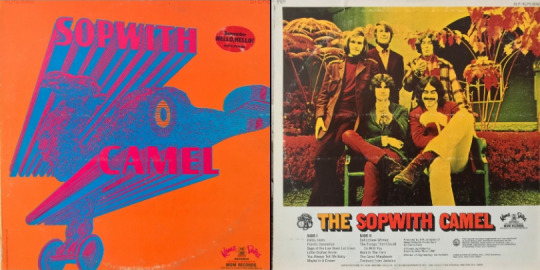
The Sopwith Camel - Sopwith Camel
A prime example of how fast things can develop, The Sopwith Camel released their only hit single less than one year after they had started rehearsing as a band. Within a week after founder Peter Kraemer met guitarist Terry MacNeil (later known as Nandi Devam) at Big Little Book Store in San Francisco they had written several songs, including Hello Hello, Frantic Desolation and You Always Tell Me Baby. By the end of 1965 they added three other band members guitarist William Sievers, drummer Norman Mayell, and bassist Bobby Collins who soon gave way to Martin Beard. The band started rehearsals in a former firehouse on Sacramento St. In April they laid down six tracks for a demo recording.
Thanks to Bobby Collins, who had briefly played bass for Kraemer and MacNeil in the beginning, a copy of the demo ended up in the hands of Erik Jacobson. A New York producer with Sweet Reliable Productions, Jacobsen had been responsible for seven top ten hits for The Lovin’ Spoonful in one year. He had also worked with Tim Hardin as well as with The Charlatans, another fledgling SF band. Particularly attracted to Sopwith Camel’s Hello Hello, Jacobsen came to California to meet with them in May. Within the week the band signed a contract with his Sweet Reliable Productions. In late summer he took them into Coast Studio in SF to do the basic track of Hello Hello. The band then relocated to New York City to record the album and while there, signed with Kama Sutra, for which Jacobsen had produced two albums with The Lovin’ Spoonful. The Sopwith Camel was the second San Francisco band of the era to be signed to a label. Recording was done intermittently throughout the Fall while The Sopwith Camel also toured as an opener for The Lovin’ Spoonful. This meant they spent an extended period of time in New York.
Not long after Hello Hello b/w Treadin’ had been released as a single the band returned to San Francisco. After the release of their next single, Postcard From Jamaica b/w Little Orphan Annie, in April 1967. Sopwith Camel went back into Coast Recorders and recorded one more track, The Great Morpheum. In May the eponymous album was released. By this time Hello Hello had gone off the charts and that next single, had not been successful. Considering this, a sticker was placed on the album upon release that said, Remember Hello Hello! In early October a third single, Saga of the Low Down Let Down b/w The Great Morpheum was released but did not chart. It took over five months for the album, Sopwith Camel, to enter the Billboard Top 200 and after two weeks it went off the chart. By this time the band had started slowly disintegrating.
Hello Hello was not the song one would have expected to be the first Top 40 hit to herald the up-and-coming San Francisco psychedelia music era. It was released in mid-November 1966, b/w Treadin’. It entered the Billboard Hot 100 on Dec. 24 and by January ’67 crested at No.26 on the Top 100,y becoming the first San Francisco band in that era to have a Top 40 hit song. It did very well in some markets across the country: No.2 in San Jose CA, No.3 in San Diego CA, No.4 in San Francisco CA, and Louisville KY, and No.5 in San Antonio TX and Boston MA. It was one of the first songs written by band founder Peter Kraemer and guitarist Terry MacNeil right after the first met. The style harkens back to the days of Vaudeville, which was the primary live music source from the the late 1800’s to the early 1930s. The lyrics are about a simple desire to meet someone, get to know them, to share with them.
Song two of the album, Frantic Desolation, was also one fo the first songs Peter Kraemer and Terry MacNeil wrote together, but , according to MacNeil, they didn’t perform it early on. They decided to record it because they needed songs for the album. It was a distinct shift from the good timey vaudevillian Hello Hello to a distinctly psychedelic sound. The fuzztone guitar played by Terry MacNeil was noted by Elvis Costello to be ‘one of the best examples of psychedelic guitar from the period’. In an interview with the The Psychedelic Guitar MacNeil said that he wanted to reflect the meaning of the words desolation, desperation, in his guitar playing. He sat close to the amp for feed-back and played as weird as he could. In later reincarnations of Sopwith Camel it was regularly played.
William “Willie” Sievers penned The Saga of the Low Down Let Down. This has a good time feel to it musically, but it is about a low down let down none the less.. MacNeil again shines on the all too short, but effective guitar solo.
Little Orphan Annie is a musical version of the syndicated newspaper comic strip that first appeared in 1924. Back to the vaudeville era, but with just a hint of the ‘60s hippie chick as well. The tongue-in-cheek performance has a a very winning way about it, with a skillful instrumental interlude featuring twelve-string guitar. One can’t help conjuring up images of Annie and Sandy in this winning “comic strip” tune.
The final two songs on side one each have their own character about them. You Always Tell Me Baby recites a complaint about how the protagonist is being told how to do things by their counterpart. It features flowing harmonies behind the lead vocals and well placed trumpet throughout. The conclusion of the song seems poised for the following song. Maybe in a Dream is basically an instrumental until the final quarter of the song. It has an optimistic feel as guitars and keyboards soar and glide throughout.
The most arresting song on the album, Cellophane Woman, starts off side two. It is the other psychedelic number but with a harder, almost punk quality to it. The lyrics, written by Willy Sievers, seem to be an anti-materialism metaphor that doesn’t quite hit it’s mark. Yet the angst is there and the instrumentation takes it over the top right to the finish.
Returning to the roots of the album, The Things That I Could Do With You takes it straight back to the vaudeville era. Again written by Kraemer and MacNeil, this one is a fantasy about all the things someone could be doing together with their girl. Well, not quite that kind of fantasy, unless you let your imagination run wild. It features a nice little harmonium solo.
Walk in the Park continues in the vein of old-time vaudeville, only this time going back to the 19th century for inspiration. While very original in many ways, composer Willy Sievers seems to take a cue from British songwriter Harry Dacre’s 1892 “Daisy Bell (A Bicycle Built for Two)”. Sievers replaces a ride on a bicycle with a walk in the park. The ragtime-style piano style fits in perfectly as do the background harmonies. On top of all this, the comedic voice-over in the middle is priceless as William, shyly but slyly, asks Daffney to take a walk in the park with him.
The Great Morpheum was the last song written and recorded for the album. Like Hello Hello, it was recorded in San Francisco. It was in April 1967, the month before the album release. The band had just recorded four 45-second commercials for Levi Strauss. Peter Kraemer recalls that he and Terry MacNeil went into a smaller studio at Coast Recorders to write the song. Along with guest saxophonist Terry Clements, Martin Beard and Norman Mayell had the basic track cut on the second take. After inclusion in the album it later became the B-side of their third single. The pace of the song slows considerably from the other cuts on the album. It has variation within itself though and the highlight happens when Clements’ saxophone comes to the fore. The song is about a surreal movie at a theater (the Morpheum). I was recently enlightened by none other than Peter Kraemer, that the Great Morpheum is in fact, about the Vietnam War. I agree that, with a bit of thought and understanding, makes perfect sense. Thanks to Peter for pointing this out. Who else would know better than he? The song’s conclusion builds to a dramatic finish, but once again the last note, so to speak, hangs in mid-air. It also leads into the final song.
Postcard From Jamaica begins with a postman ringing a doorbell announcing a mail delivery. It’s a message from a girlfriend who is visiting Jamaica, and an invitation for the reader to take a trip to see her there. As the album had not come out as yet, Postcard From Jamaica b/w Little Orphan Annie was released as second single. The haste to get it out created a scenario as told by Peter Kraemer, "Sopwith Camel was being interviewed by the DJ at a radio studio in Dallas when a guy named Richie, from Cavallo’s (the band’s manager) office, brought the 45 in from New York. When the engineer in the sound booth dropped the tone arm it bounced and skated right off the record. He tried again; it did the same thing. He looked at the band through the double glass and sadly shook his head; the bass was cut too hot and the record wouldn't track. It would play on the more primitive equipment in jukeboxes and became what was called a 'jukebox hit' in some parts of the country and in Canada.”
The album featured poster artist Victor Moscoso’s first great pop-art cover. Essentialy the design already was used for a Matrix poster back in February. The back liner cover had the first infra-red band photo, shot by Jim Marshall.
While Hello Hello wasn’t precisely one of my favorite songs, when I spotted the album at the record store I decided to find out what the rest of it sounded like. I thought it strange that there was a sticker on the cover that said REMEMBER HELLO, HELLO. Of course I remembered it, but at the time I perhaps didn’t completely get that their only hit song had come and gone three or four months before the album hit the market. I immediately enjoyed what I heard though, and quickly added it to my small but growing collection.
I felt that overall, the song-writing, arrangements, originality, vocals and instrumentality were really top-notch. It’s notable that the music was all band-written, not something usually encountered at that time. What struck me most about some of the writing was its’ droll humor. In particular I was quite taken by Little Orphan Annie and Walk in the Park. They are among those songs on the album that harkened back to vaudevillian style, yet worked so well in the renaissance of the ‘60s. I was equally intrigued by Frantic Desolation and Cellophane Woman, both of which explored the more experimental aspects of the period. While I enjoyed the rest of the songs, the final two took me a bit longer to warm up to. I simply didn’t listen to them as much for quite awhile. Eventually though, I began to appreciate the more elaborate arrangement of The Great Morpheum, and the warmth and optimism of Postcard From Jamaica.
The record quickly became one of my favorites. I can still fairly well sing along with most all the songs. It’s unfortunate that, since the album faded so quickly once it finally appeared, not many people really got to hear all Sopwith Camel had to offer. It turns out that by the time of the release the band had started to fall apart due primarily to bickering and, as one band member called it, immaturity. Willy Sievers had announced in November that he intended to leave to start a solo career, but didn’t actually do that until late spring of the next year. The band members still played in other projects, some of which included two or more of them, but things seemed to be over for good. At least for the time being.
I missed a golden opportunity to see not only Sopwith Camel, but Buffalo Springfield and The Standells as well in 1967. The event was a tri-school dance that had been put together by a student named Rod Jew at Cubberley High School in Palo Alto. Held at the high school pavilion, the concert was on April 27th, just prior to the Camel’s album release. All the bands had, or were enjoying, big hits. I thought I had lost any opportunity after that but Sopwith Camel was to have more in store.
Another opportunity unexpectedly came up in 1971. After not hearing anything about Sopwith Camel for nearly four years, they resurfaced playing a dance concert at Foothill Community College in Los Altos Hills CA. By this time I was a student there and attended the show in the gym with my girlfriend/future wife. While he was not aware that this event had occurred, based on information obtained through a blog done by music historian Bruno Ceriotti, it appears that four of the original band members had reunited. Hearing them play songs from that first album live was like a dream come true.
Speaking of Bruno Cerotti, through three decades of research he created a day-by-day diary of The Sopwith Camel as well as other bands. Utilizing information from interviews, as well as gathering many visuals, from several individuals and news media sources, it gives far more details than one would would normally expect to encounter. Particularly for a band that had but two albums (not counting re-releases), three singles, one hit song, and lasted less than a decade at their height. He also documented their return to performing from 2009-2016. Finally looking into what Bruno has accomplished I decided to reach out to him and we have become friends. He was quite amazed and excited to hear of the show at Foothill College. He helped me hone in on the year it must of happened and now all we need to do is get a precise date and any other details. It’s good to be interactive.
http://brunoceriotti.weebly.com/the-sopwith-camel.html
https://en.wikipedia.org/wiki/Sopwith_Camel_(band)
https://www.allmusic.com/album/the-sopwith-camel-mw0000117772
website https://www.sopwithcamel.com
Joel Selvin articles https://www.sopwithcamel.com/stories2.html
https://www.sopwithcamel.com/stories4.html
https://sopwithcamel.org/about-the-band/
https://www.rollingstone.com/music/music-news/sopwith-camel-where-are-they-now-93996/
https://www.sopwithcamel.com/Albums.html
https://vancouversignaturesounds.com/hits/hello-hello-sopwith-camel/
http://therockasteria.blogspot.com/2014/09/sopwith-camel-sopwith-camel-1966-67-us.html
https://www.discogs.com/artist/391236-Sopwith-Camel
https://www.sopwithcamel.com/stories4.html
http://www.rockremnants.com/2013/06/22/song-of-the-week-hello-hello-sopwith-camel/
http://andrewdarlington.blogspot.com/2014/01/
https://www.sopwithcamel.com/Terry.html
https://fictionliberationfront.net/erik_jacobsen.html
https://en.wikipedia.org/wiki/Erik_Jacobsen
Hello Hello https://www.youtube.com/watch?v=YjYsl__loTw
Frantic Desolation https://www.youtube.com/watch?v=uaxiKL-Rzjk
Saga of the Low Down Let Down https://www.youtube.com/watch?v=KdcMbtkQxaQ
Little Orphan Annie https://www.youtube.com/watch?v=O-y-afIkukg
You Always Tell Me Baby: Maybe in a Dream https://www.youtube.com/watch?v=yU2Saf1EKlc
Cellophane Woman https://www.youtube.com/watch?v=i_0LxEQnnVI
The Things That I Could Do With You https://www.youtube.com/watch?v=Z3-kM0brrXQ
Walk in the Park https://www.youtube.com/watch?v=3CIG6Xc-GFc
The Great Morpheum; Postcard From Jamaica https://www.youtube.com/watch?v=DU5e3lcHkx0
LP25
1 note
·
View note
Text
LUCY AND THE GENERATION GAP
S2;E12 ~ December 8, 1969


Directed by Jack Baker ~ Written by Fred S. Fox and Seaman Jacobs
Synopsis
Kim and Craig are in charge of producing the school play. At a loss for ideas, they recruit Lucy and Harry to be in a musical about the generation gap.
Regular Cast
Lucille Ball (Lucy Carter), Gale Gordon (Harrison Otis Carter), Lucie Arnaz (Kim Carter), Desi Arnaz Jr. (Craig Carter)
Guest Cast

Cecil Gold (Fred) danced in one more episode of the series; the same episode directed by Jack Baker. Lesley Evans (Janet) was a dancer on the Dick Clark series “Where the Action Is” and also played nurses on several episodes of “M*A*S*H.”
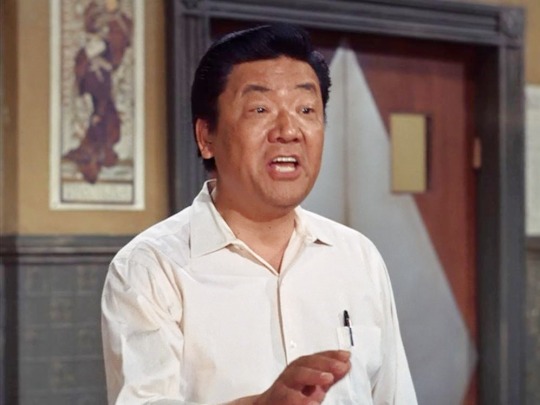
Victor Sen Yung (Murphy Irving Fong) was best known for playing the cook Hop Sing on “Bonanza.” He was previously seen as the Waiter in “Lucy's Birthday” (S1;E8).

The 'Slave Girls’ are played by:
Sheila Denher was also glimpsed in the background of the film musicals Bye Bye Birdie (1963) and Hello, Dolly (1969).
Fran Lee was the sister-in-law of Jack Gilford, who appeared in “Lucy Helps Craig Get a Driver's License” (S1;E24). She appeared on radio and television under the names Mrs. Fix-It, Mrs. Consumer, and Granny Franny, to give advice on consumer issues and public health and safety. Lee led a successful consumer campaign that helped passed the "Pooper Scooper Law" in New York City, which made residents responsible for cleaning up after their pets. This is her only appearance with Lucille Ball.
Leslie McRae was Miss Hawaii in 1968. She was also second runner up to Miss World in 1968. This led to a film career that included producing a documentary film about the events of 9/11.
Tara Glynn, Joanie Webster and Martiz Ko all make their only screen appearances with this episode.
The “Card Girl” and the diners at Murphy's Pizza Parlor are all uncredited background performers.

This is the first of two episodes directed by Jack Baker, who was the choreographer for all of the Desilu series' since the last season of “I Love Lucy.”
The final draft of this script was submitted on May 14, 1969. Cate Blanchett was born on this date in Australia and is currently slated to play Lucille Ball in an upcoming biopic.

“Here's Lucy” musical director Marl Young introduces the episode on the DVD.
It is rumored that Lucille Ball's voice was dubbed in the songs, which were all pre-recorded and mouthed by the cast for the filming. Since Lucy has no solo singing, it is difficult to tell if it is actually her voice or not on the soundtrack.
Craig jokes that he knows a Mormon, so he might be able to get the Mormon Tabernacle Choir for their school show. The choir was previously mentioned in “Guess Who Owes Lucy $23.50” (S1;E11).
When Lucy avoids eating pizza to preserve her figure, Craig says “Look what it did for Sofia Loren.” Lucy digs in. Sofia Loren is an Italian-born film actress of great beauty who won an Oscar for Best Actress in 1960.
Putting a quarter in the juke box, the music immediately plays the instrumental version of “I Know A Place” by Tony Hatch. The song was made popular in 1965 by Petula Clark. This is the fourth time the song has been heard on “Here’s Lucy.”

Craig uses the expression “Chinaman's Chance” in front of Murphy (Victor Sen Yung), who says “Don't apologize to me! I'm Irish!” In reality, Victor Sen Yung was born in San Francisco but to Chinese immigrants.
Craig says that Harry is their only uncle, a fact that will be challenged when Lucy’s brother Herb is introduced in February 1972.
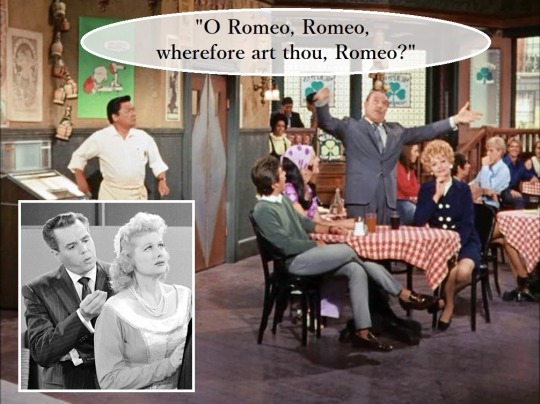
Harry says that he was in Romeo and Juliet in college. Because it was an all-men's college, he played Juliet. He stands up in the middle of Murphy's and delivers Juliet's monologue. This is the same part that Lucy Ricardo played in high school. Like Harry, she delivered the monologue at the drop of a hat in “Lucy Meets Orson Welles” (ILL S6;E3).

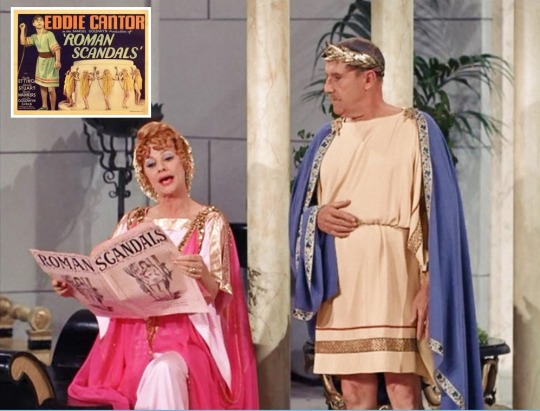
At the start of the first segment of the musical, Gale Gordon (and later Lucille Ball) is reading a magazine called 'Roman Scandals.' Roman Scandals is also the title of Lucille Ball's uncredited film debut in 1933.
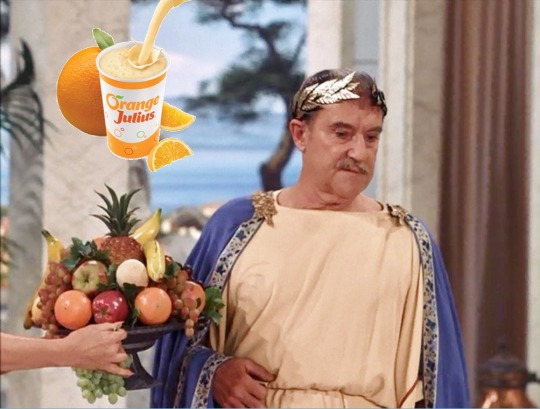
In the Greek section of the school play, Lucy plays Calpurnia and Harry is Caesar. Holding a bowl of fruit, she asks “Would you care for an orange, Julius?” Orange Julius is a chain of fruit drink stores that grew out of a single orange juice stand operated by Julius Freed in Los Angeles in 1926. The Orange Julius was named the official drink of the 1964 New York World's Fair. The business is currently owned by Dairy Queen.
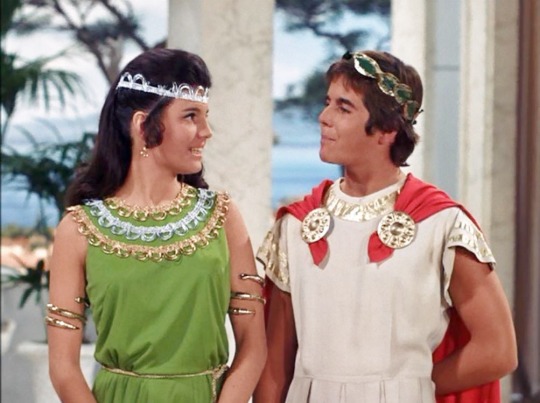
Kim is named Kimea and she wears a mini-toga. Craig is called Craigius and has long hair (thanks to his barber Delilah).
When Caesar (Harry) asks the weather, Calpurnia (Lucy) replies, “Hail, Caesar!”
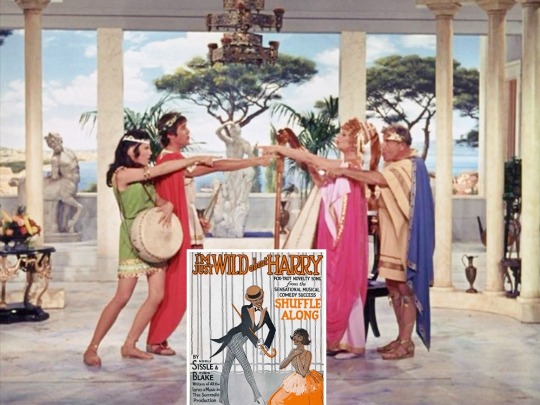
“Kids Are Bugged About Parents” is the first song of the play sung to the tune of “I'm Just Wild About Harry, ” a song written in 1921 by Eubie Blake for the Broadway show Shuffle Along. Like all the songs in the episode, it has special lyrics suited to the theme.
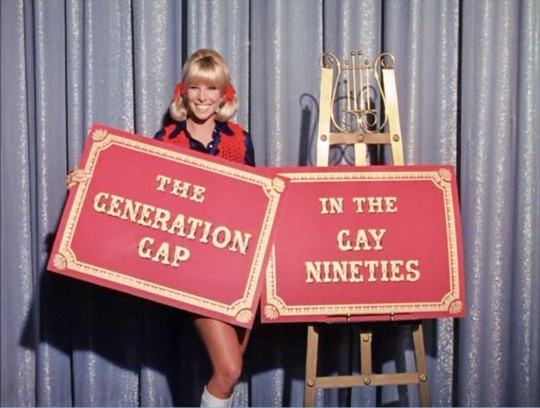
In the Gay 90s segment, Harry plays Ambrose, the father. Lucy and the kids don't get different names in this segment.
Craig wants to date Mary Lou. Kim wants to date Georgie Marshall. George Marshall was the name of the director who staged the first eleven episodes of season two of “Here's Lucy.”

The foursome sing “We'll Just Cut the Old House in Two” which is sung to the tune of “Bicycle Built for Two” aka “Daisy Bell” written in 1892 by Harry Dacre.
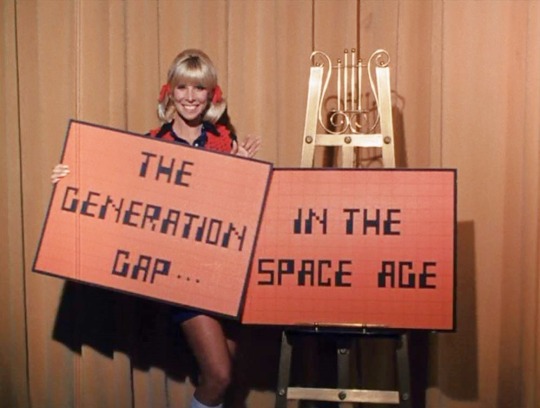
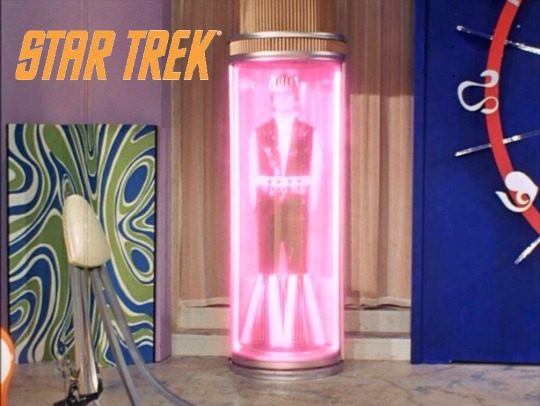
In a nod to Desilu's series “Star Trek”, at the opening of the space age segment, Craig (with the help of the Desilu special effects department) materializes in a transporter tube.
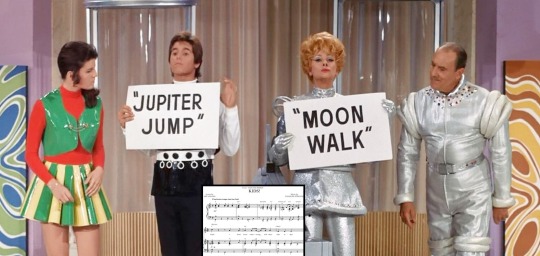
Kim wants to go to Jupiter with Spencer. When Lucy refuses because it is an overnight trip, Lucie reasons that Helen's mother lets her go. Harry points out that Helen's mother is a robot – and always “well-oiled.” They sing “Kids” a song written by Lee Adams and Charles Strouse for the 1960 Broadway musical Bye Bye Birdie. The musical was filmed in 1963. This song is originally about the generation gap, so it requires the least lyrical changes.

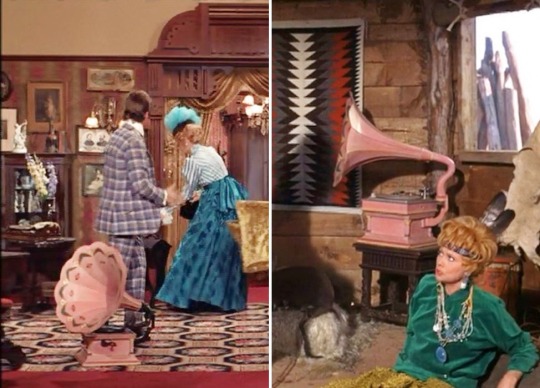
A pink phonograph used as a prop in the Gay '90s segment was previously seen (somewhat incongruously) in the Navajo hogan in “Lucy and the Indian Chief” (S2;E3).

Gay '90's musical segments were seen on “I Love Lucy” in “Lucy's Show Biz Swan Song” (ILL S2;E12) and “Mertz and Kurtz” (ILL S4;E2).
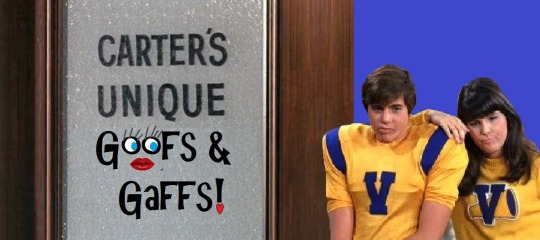
Shut the Front Door! The front door of Murphy's Pizzeria is wide open in the second scene. This was common on “Lucy” sitcoms. When the camera pans out to show the juke box, the cement stage floor is visible.
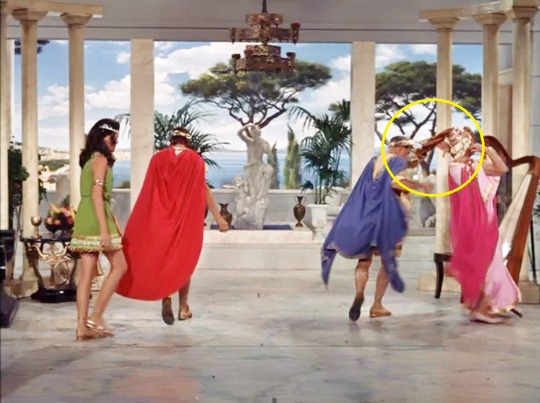
Wardrobe Malfunction! During the dance break in “Kids Are Bugged About Parents” Lucy's long hair momentarily gets snagged on Gale Gordon's gold metal laurel. Ouch!
Lip Synch for Your Life! When the stage separates at the end of the Gay 90s segment, Lucie Arnaz stops mouthing the words to the song when others are holding out the last note.

Sitcom Logic Alert! A few months earlier, Kim and Craig's school had to raise money just to afford a gymnasium. The costumes and scenery here are far too lavish for any high school to afford.

“Lucy and the Generation Gap” rates 4 Paper Hearts out of 5
This is by far one of the best of the musical episodes. Desilu must have broke the bank on costumes and scenery for this episode. The theme of 'generation gap' is truly what the show was supposed to be about so it is nice to see it played out again in a musical theatre format. For all its lavish production values, the show has a neat symmetry: three segments from history, each one with one song, sung by all four cast members. There is also far more clever 'scene work' here than in most musical episodes.

#Here''s Lucy#Lucille Ball#Gale Gordon#Lucie Arnaz#Desi Arnaz Jr.#Victor Sen Yung#Leslie Evans#Cecil Gold#Jack Baker#Sheila Denher#Fran Lee#Leslie McRae#Tara Glynn#Martiz Ko#Joanie Webster#Mormon Tabernacle Choir#I Know A Place#Rome and Juliet#Roman Scandals#Orange Julius#Julius Caesar#Kids#Bicycle Built for Two#I'm Just Wild About Harry#George Marshall#Gay 90s#high school musical#TV#CBS#1969
2 notes
·
View notes